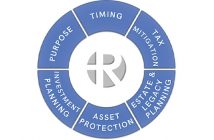Investing for the Future with Exchange-Traded Funds
There are two main investing philosophies: active management and index management. Active investors try to beat the market by buying and selling investments based on personal beliefs that the investments will increase or decrease in price. On the other hand, index investors believe that it is very difficult to consistently pick exceptional stocks—and that the combination of management fees, trading expenses, and increased taxes created by active investing make it virtually impossible for an active manager to beat the market over a long period of time. One popular type of index investment is the exchange-traded fund, or ETF.
An Exchange Traded Fund (ETF) is a collection of securities that tracks, and is intended to represent, the performance of an entire segment of the market, such as U.S. equities, small cap stocks, or emerging markets. ETFs are similar to index mutual funds, but trade like stocks. ETFs offer an approach to investing that combines instant diversification with trading flexibility, reduced expenses, and improved tax efficiency. Extremely low expense ratios (as low as .05 percent per year) allow ETFs to outperform many active mutual funds that charge investors large fees (averaging 1.3 percent per year) and attempt to outperform the overall stock market. ETFs combine some of the best features of index mutual funds with individual securities:
• Like index mutual funds, ETFs allow investors to track hundreds of domestic and international indexes, including the S&P 500 and the Dow Jones U.S. Total Stock Market Index, as well as specific sectors and industries such as utilities, technology
or healthcare.
• Like individual stocks, ETFs give investors the flexibility to buy and sell on the major stock exchanges throughout the day at the market prices. Also like stocks, investors can place stop loss and limit orders on ETFs.
As more and more investors have realized the tremendous benefits of ETFs, they have gained popularity over the past decade; there are now more than 1,800 ETFs, totaling more than $2.6 trillion in total combined assets.
The Benefits of Exchange Traded Funds:
1. Diversification—ETFs offer exposure to a particular market segment, helping to protect against the risk of a small number of individual stocks hurting an investor’s overall portfolio performance.
2. Low Fees and Expenses—ETFs that are passively managed often have low fees that can be as little as 10 percent of the average cost of an actively managed fund.
3. Trading Flexibility—Unlike mutual funds, ETFs trade all day long, allowing investors to lock in the market value of an ETF anytime during the trading day.
4. Transparency—ETFs disclose exactly which securities they hold so there is no need to wait for the end of the quarter to review a fund’s holdings.
5. Tax efficiency—ETF investors decide when to sell their shares so, as with a stock transaction, the investor can control the timing of taxes on any capital gain or loss. Unlike mutual fund investors, ETF buyers and sellers usually don’t assume as high a tax burden for fellow shareholder redemptions.
While ETFs can fill a powerful role in your portfolio, ETFs vastly differ in their quality. Many ETFs are very high quality, but some are actually poor investment choices. Therefore, before
purchasing any ETF it is important to thoroughly research its underlying investments, expense ratio, diversification, taxation
and tracking error.
Paul Svendsen CPA/PFS is a Senior Wealth Manager and head of the Bend office of Black Diamond Financial LLC. He can be reached at 541-389-4740 or paul@blackdfinancial.com




